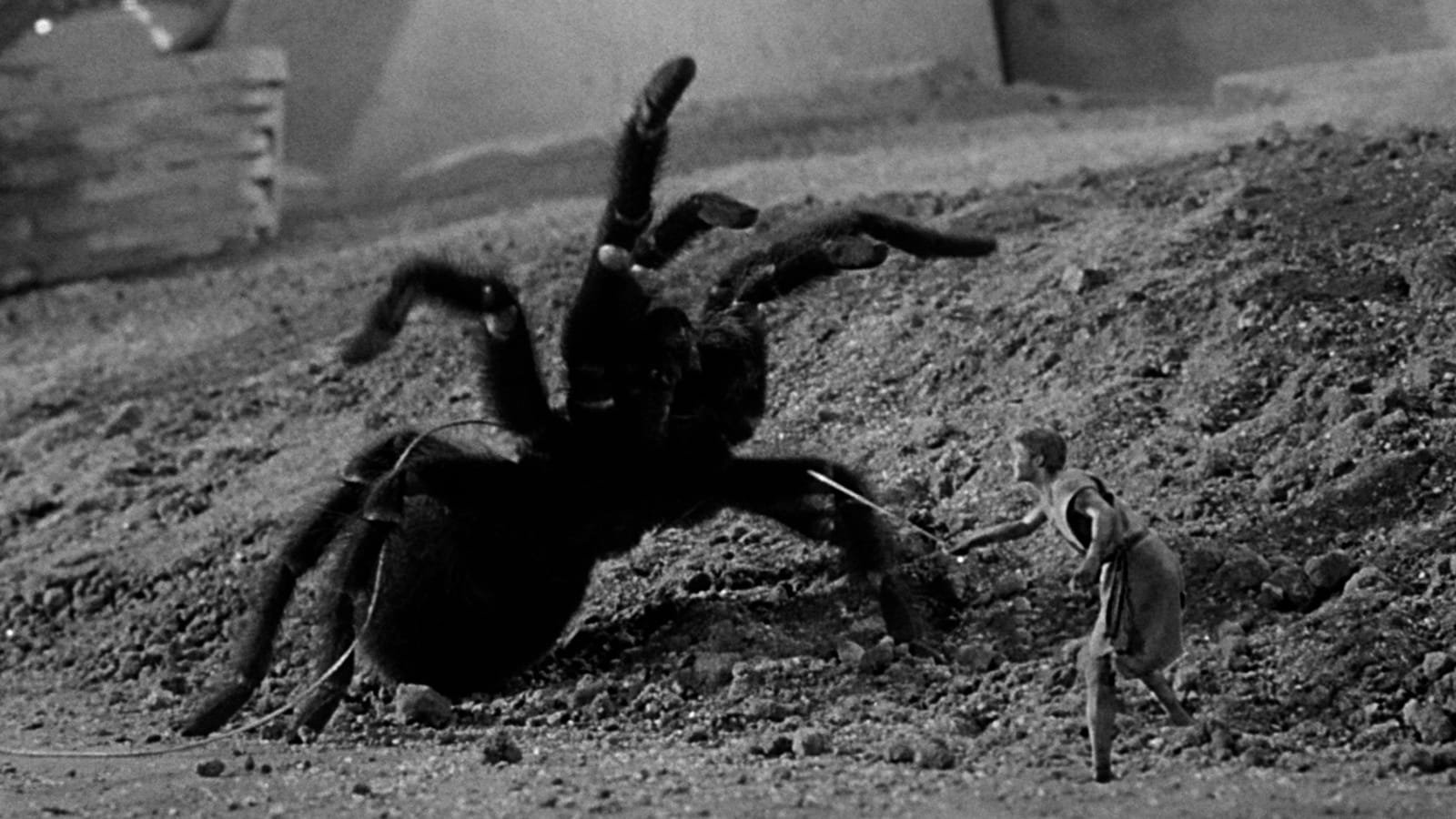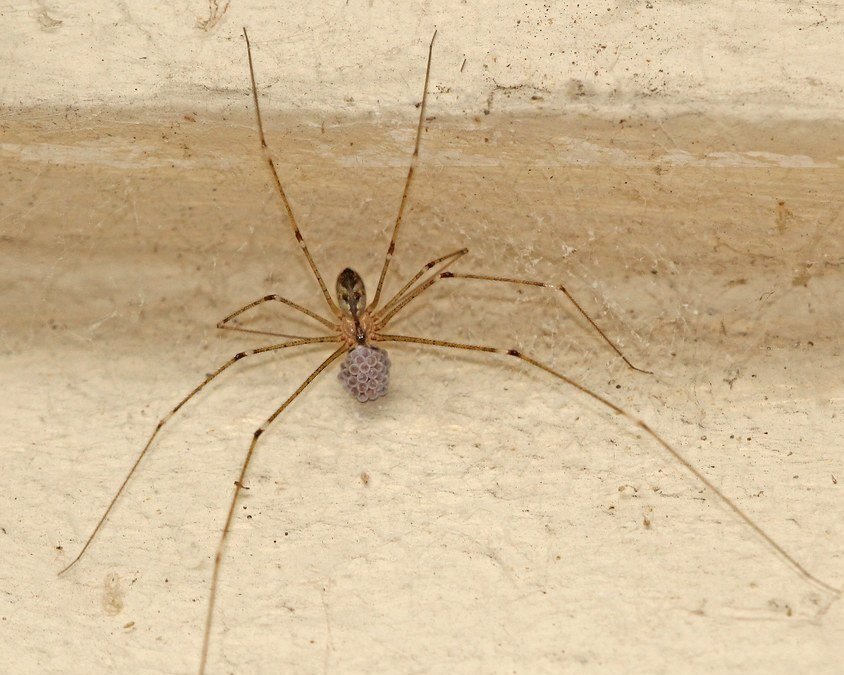Arachnotherapy
One of the portals to hell in our cellar.
As 123-year-old houses with creepy dank, dark cellars go, ours is the perfect candidate for a horror film. Two sprawling crawlspaces flank either side of a low-ceilinged cellar hardly larger than a postage stamp. The openings to these crawlspaces gape high on opposing fieldstone walls and have the ragged blasted quality of a successful dungeon break complete with rubble in the openings. (The red paint splotches might have been an attempt at humour by previous owners.) A 4-foot ladder is needed for entry—arms and head first, please.
The Incredible Shrinking Man, 1957
Making matters worse, the black of these “black holes” is perforated only by anemic streams of sunlight through chinks in the fieldstone foundation or a droplight with a very long cord. To venture into one of these spaces is to enter a Mathesonian world akin to the basement belonging to Scott Carey, the irradiated protagonist of the 1957 sci-fi film The Incredible Shrinking Man who, shrunken in both stature and confidence, is forced to fend off death-by-gargantuan-spider with a straight pin.
Old houses aside, even those blessed with modern construction find themselves uneasy about what lurks in that murky-webby space behind the furnace. (Go ahead—I dare you to rummage back there with a bare hand in the dark.) Sturdy stainless-steel shelving units illuminated by LED overhead lighting can civilize that 6-foot-deep hole in the ground only so much. As for the squatters living there? No matter the age of the house, everyone likes it when the denizens who live down there stay down there.
Except we don’t always get what we want. So, after three years of jumpy revulsion when I slide a boot aside or pause to give that funnel web a wide berth at the top of the cellar stairs, I have eschewed my crush-it-with-a-tissue-and-flush-it-for-good-measure spidercidal ways and learned to cohabitate with these often furry but always multi-eyed, multi-legged freeloaders. They now get mad props for keeping the place free of other yucky crawly things, and they get bonus points for the unlikeliness to bite. Win/win. It also helps to give them names.
Name: Dorothy
Her People: Barn Funnel Weaver
Home Town: Corner by the Cellar Door
Extremely fast and shy
Doesn’t bite people
We hardly ever get a glimpse of Dorothy, as she keeps to herself. Her funnel webs, though, are something to behold, and she does yeoman’s work keeping the riffraff from working their way out of the cellar and into our kitchen. And for that, we are all grateful. Dorothy is likely to live up to seven years! A good, reliable long-term tenant. Next up:
Name: Remus
His People: Wolf Spider
Hometown: Back Hall by the Boots
Does not weave a web
Extremely fast & unlikely to bite
If you think Dorothy and Remus are nearly impossible to tell apart, you’d be right. The major difference here is that Remus doesn’t weave webs while Dorothy does. Remus, though, also keeps the place clear of bugs and insects. After I understood that he wouldn’t bite me, I still insisted on trapping him and putting him outside due to his bulky (read: menacing) appearance. But he always found his way back in, taking up his usual spot behind the boot mat. Wolf spiders on average live one to two years, so I won’t get too attached. That said, have at it, Remus! Your size and speed are double-plus-ungood, but live it up! Bon appetit!
Name: Ichabod
His People: Longbodied Cellar Spider
Hometown: The Cellar
Known typically as “daddy long legs”
Eats insects and other spiders, sadly
So, there are many varieties of these long-legged cellar spiders, but they all basically do the same work: eat bugs, insects, and even other spiders. They can’t really bite us, so there are no worries there, but even if they manage to, our heroes on MythBusters have demonstrated that their venom won’t hurt us. The daddies are pretty reliable tenants and can live up to three years, despite their fragility. If one makes his way upstairs in your house, just put him back down in the cellar—gently—where he belongs.
Name: Charlotte
People: Marbled Orbweaver
Hometown: Greenhouse
Outstanding greenhouse insect control
Weaves a new web each day
That photo is of our very own Charlotte in the greenhouse doing her ritual weaving and, in real time, cocooning a newly trapped flying insect right as Matt was taking the photo. We’ve discovered that Charlotte and her orb-weaving clan are doing a spectacular job keeping the greenhouse free of aphids, leaf miners, root maggot, and thrips. Last year, we struggled mightily with controlling these pests, but since Charlotte and her siblings (literally) have taken up residence, we’ve had few problems this year. Their glistening webs are lovely things to discover—and leave undisturbed—on a sunny morning! Coastal Grove Farm is all about Team Charlotte!
Few can honestly claim to like the idea of hairy multi-legged, multi-eyed creatures lurking in the darkest recesses of our homes just waiting to trap some unsuspecting passerby for dinner, so I think it might be helpful to try to reframe their presence. Perhaps a mindset more aligned with opening our homes and community to the despised and dispossessed who then, in gratitude, do their part to keep our homes and community even more homey and welcoming is more appealing. Taking this notion even further, maybe with enough practice sharing in this manner, we might actually grow more tolerant and respectful of the despised and dispossessed souls among us who lack homes and community. Think of it as therapeutic arachno-humanitarianism, the promotion of kinder, gentler human behaviours through the provision of free lodging for spiders. Hey! Was that an eye-roll? Is Charlotte wrong when she reassures Wilbur, “Trust me, Wilbur. People are very gullible. They’ll believe anything they see in print.”? Maybe. But then Charlotte also says, “After all, what’s a life, anyway? We’re born, we live a little while, we die.” Well, there’s no disputing the truth in that, so I say, “Yep. Make it count, people. Embrace the spider.”
Credit for the cute hairy guy’s photo on the story itself belongs to Lukas Jonaitis from Vilnius, Lithuania






